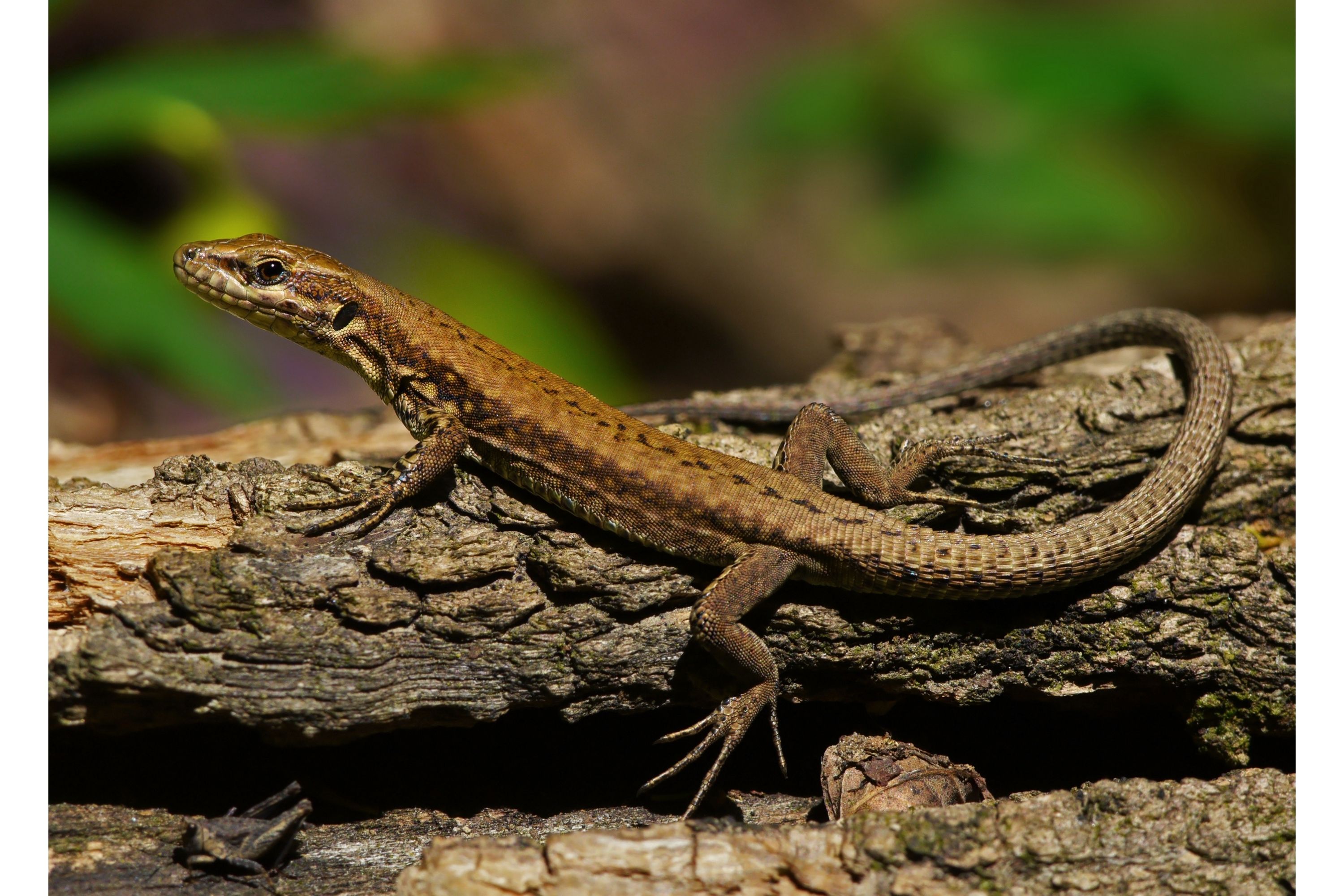Common wall lizard
(Podarcis muralis)

Description
Podarcis muralis (common wall lizard) is a species of lizard with a large distribution in Europe and well-established introduced populations in North America, where it is also called the European wall lizard. It can grow to about 20 cm (7.9 in) in total length. The common wall lizard is a small, thin lizard whose small scales are highly variable in colour and pattern. Its coloration is generally brownish or greyish, and may occasionally be tinged with green. In some individuals, the row of spots along their backs may form a line, while others may have a reticulated pattern with dark spots on the side and scattered white spots that can be blue in the shoulder region. The tail is brown, grey or rust in colour, and may also have light bars on the sides. The belly region has six rows of larger rectangular scales that are generally reddish, pink, or orangish. Common wall lizards may also have dark markings on the throat. This lizard has six distinct morphological forms which are identified by the colouration of its throat and underbelly. Three of these are pure morphs consisting only of solid colours on their scales: white, red (orange) or yellow, and three other morphs are distinguished by a combination of colours: white-yellow, white-red and yellow-red. The common wall lizard prefers rocky environments, including urban settings, where it can scurry between rock, rubble, debris and buildings. In the southern part of its range it tends to occur in humid or semi-humid habitats, compared to drier habitats in the north. Common wall lizards rely both on visual and chemical signals to communicate with conspecifics. Male wall lizards are equipped with femoral glands, which produce a waxy secretion used for chemical signalling. Both the proteinic and lipophilic compounds in the secretions are known to carry socially relevant information. The natural range spans much of the mainland Europe except from the north and very south and extends to Turkey. It occurs as introduced populations in southern Britain, where one such population in the seaside town of Ventnor on the Isle of Wight has become somewhat famous, and also in North America. There has been some scientific debate as to whether the populations in Southern England represent the northern edge of their native range.
Taxonomic tree:







